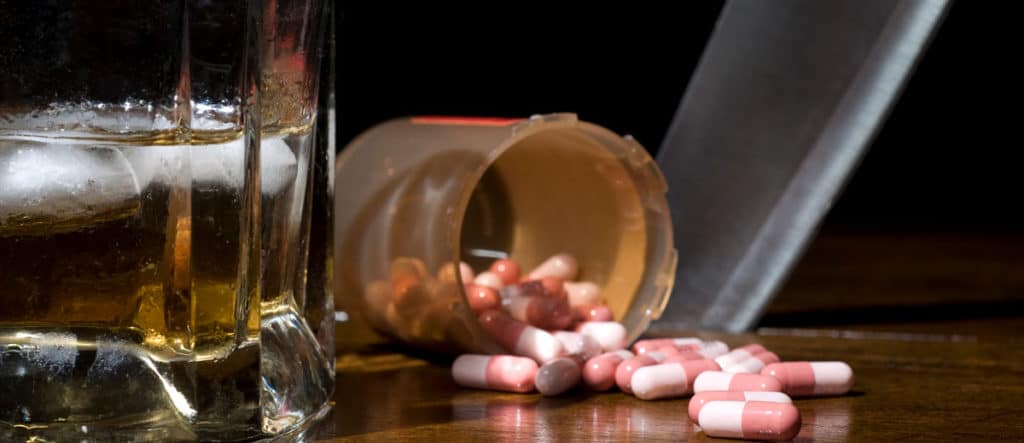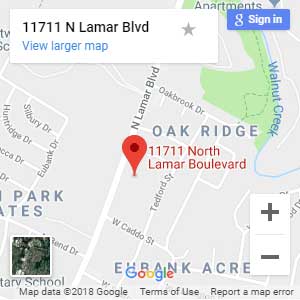Updated on December 17th, 2020
Despite the mortality associated with guns, car accidents, and falls, there is one thing that causes more deaths: drug overdose.1 In 2015, a total of 52,404 people died as a result of a drug overdose.2 Although the statistics are shocking, what’s worse is that this overwhelming loss of life was preventable.
Table of contents
After individuals complete an alcohol and drug detox program, they are particularly vulnerable to overdose because they no longer have a tolerance for the substances they used to use. Therefore, what was once a “normal dose” for them suddenly becomes extremely dangerous and potentially deadly.
There are plenty of things we can do to prevent overdose and protect the ones we love. Keep reading to learn more about the signs and symptoms of overdose, who is at risk, and what to do in the event of an overdose.
What Is an Overdose?
An overdose is caused by unintentional or intentional misuse of a substance, such as alcohol or drugs. An alcohol overdose is referred to as “alcohol poisoning” and the term “overdose” is typically used in regards to prescription or illicit drugs.
An overdose occurs when a person accidentally takes more than the prescribed amount of an over-the-counter or prescribed medication. It can also happen when a person purposely takes a large dosage of illicit or prescription drugs to get high or in an attempt to commit suicide.3
What Are the Symptoms of an Overdose?
Each type of substance affects the body differently and every person will have a different response to those substances. As a result, the signs and symptoms of an overdose may vary greatly, especially if the person used more than one drug simultaneously. In general, there are some common signs you can look for.
If someone has overdosed on a stimulant drug, such as cocaine, methamphetamine, Ritalin, Adderall, or ecstasy, they may exhibit some or all of the following symptoms4,5:
- Seizures
- Difficulty breathing
- Increased body temperature
- Chest pain
- Hallucinations
- Disorientation or confusion
- Agitation
- Unconsciousness
- Nausea and vomiting
- Foaming at the mouth
If a person has overdosed on a depressant drug, such as methadone, heroin, morphine, or fentanyl, they may display the following symptoms4,5:
- Disorientation
- Unconsciousness
- Cessation of breath or very shallow breathing
- Gurgling sounds
- Blue lips or fingers
- Unresponsiveness
- Slow or erratic pulse
- Limp body
The High Risk of Opioid Addiction and Overdoses
The CDC reports that most drug overdose deaths involve an opioid and much of the opioid and heroin abuse may first begin with prescription opioid drug abuse. The amount of prescription opioid drugs sold to doctors, pharmacies, and hospitals quadrupled from 1999 to 2010, but Americans had not reported a change in the amount of pain they were experiencing.6 Many people believe that overprescribing is a primary contributor to the overdose epidemic we are experiencing.
Although opioid painkillers are generally safe when taken as prescribed and for a short period, they produce a sense of euphoria in addition to relieving the pain, making them highly addictive, and also creating a high potential for misuse and abuse.
Even people who take prescription opioids as prescribed by their doctor may become addicted. Opioid misuse is very dangerous and often leads to overdose and death. Some individuals may also eventually transition into heroin use, as heroin is cheaper and easier to obtain.
What Should I Do If Someone Overdoses?
The best thing you can do to help someone who has overdosed is to call 911 immediately, then check their breathing and heart rate. If the person is conscious, try to calm them down and assure them that you are staying with them until help arrives. If the person is unconscious, try to wake them up by calling their name. If they are still unresponsive and they are not breathing, turn them onto their side. To determine if they are breathing, put your face very close to theirs and feel for air. You can also watch their chest to see if it rises and falls. If they are not breathing and you are certified to perform CPR, you should do so.4
Naloxone (sold as Narcan) is a medication that rapidly reverses opioid overdoses. It was patented in 1961 and approved by the FDA in 1971 for opioid overdose. As an opioid antagonist, it binds to opioid receptors to block and reverse the effects of other opioids.7 When a person overdoses on heroin or other opioids, their breathing becomes very slow or may even stop completely. Naloxone works to restore healthy and normal breathing patterns, ultimately keeping the individual alive.
Although it can reverse opioid overdoses, naloxone use can also result in opioid withdrawal symptoms, including:
- Body aches
- Sweating
- Fever
- Nausea
- Vomiting
- Cramping
- Chills/hot flashes
- Insomnia
- Anxiety
- Seizures
Naloxone can be administered in three different ways:
- Intravenously: liquid naloxone is administered via IV directly into the veins
- Injected: Naloxone is injected via a needle into a muscle
- Nasal spray: Naloxone is sprayed into one nostril while the person lays on their back
According to the National Institute on Drug Abuse (NIDA), naloxone is a prescription drug, but in some cases, you can buy it from pharmacies without a prescription from a doctor.8 In fact, ABC News recently reported that more than 8,000 Walgreens pharmacies will now carry a form of naloxone and anyone will be able to walk in and buy it.9
Although it has been used to reverse opioid overdoses for decades in hospitals, this is the first time naloxone will be so widely and publically available.
How to Prevent Overdose
Overdose can be prevented with several strategies and methods. If you or someone you love suffers from an addiction to drugs, you can help prevent the harmful effects of overdose or death with the following strategies.
- Overdose education – First and foremost, understanding what causes overdose, what it looks like, and what to do if an overdose occurs, is a key aspect of prevention. While you may not always be able to stop an overdose from happening, the more you know, the better equipped you’ll be to handle the situation.
- Naloxone training – Although Naloxone is a particularly advantageous strategy for reviving a loved one or friend in the event of an opioid overdose, a lack of awareness and training on how to use Naloxone is a big concern among professionals and the public.10,11 If you know your loved one is addicted to opioids and is at risk for overdose, it would be wise to enroll in a free training program so you can learn how to safely administer it if the need arises. Some of these programs may also provide helpful information about where to get Naloxone.
- Prescription education – If you or your loved one’s doctor has prescribed a medication to treat an illness or symptom, make sure that you understand how to take the medication and thoroughly understand the risks and side-effects that are involved. If you are uncertain about a prescription you’ve received and believe there may be other options to treat your condition, don’t hesitate to get a second opinion from another doctor.
- Long-term treatment – Since many individuals are vulnerable to overdose right after leaving a drug detox program or rehab, loved ones should encourage their friends and family members to continue treatment for as long as possible. This will give them more time to develop a genuine and lasting change in their lives. In addition, research has shown that people need at least 90 days in drug and alcohol rehab to severely decrease or stop all drug use.12 Recovery is a long-term process and will require several episodes of treatment. Drug and alcohol detox alone will not provide long-term success in sobriety.
- Relapse prevention – Addiction treatment that emphasizes relapse prevention will also help prevent overdose. Ongoing recovery support such as peer support groups, sober coaches or sponsors, regular drug and alcohol screenings, and safe, sober living environments are all things that will aid in preventing overdose after treatment at a detox center or rehab facility.
How to Get Help for Opioid Addiction
Opioid drugs are frequently involved in deadly overdoses. Naloxone may save a person’s life and prevent death by overdose, but it won’t necessarily keep them from overdosing again. Opioid addiction causes a person to obsessively seek out the drug and continue using it, despite the harmful physical, psychological, and social effects it causes. Addiction is a chronic, relapsing disease of the brain and will require professional help to overcome. Although a person may want to stop using opioid drugs, an addicted individual will require physical and behavioral treatment to stop all use of the drug(s).
Opioid Detox
Opioid addiction treatment should always begin with detox, which is the process of physically stopping all drug use. Individuals who are addicted to opioids will experience uncomfortable withdrawal symptoms when they attempt to stop using, but medically assisted detox programs, such as those offered at Briarwood, help clients achieve a stable, sober state while managing any uncomfortable physical withdrawal symptoms.
Long-Term Drug Rehab for Opioid Addiction
Once opioid detox has been completed, a person will have the best opportunity for long-term sobriety if they participate in behavioral treatment at a drug rehab center. Long-term drug rehab helps people in recovery from opioid addiction modify their unhealthy and addictive behaviors while gaining the necessary life skills to manage stress and anxiety without resorting to drug use.
Treatment for opioid addiction will look different for everyone, but the primary goals are the same: learn how to live a sober, fulfilling life without the influence of opioid drugs.
Start Recovering From Addiction Today
If you or your loved one is addicted to drugs and/or alcohol, you may be at risk of overdosing. Medically assisted alcohol and drug detox is the first step to an effective care plan to effectively treat substance abuse and mental health disorders. Please contact our admissions team today to speak to an associate about your treatment options and to learn more about our individualized drug and alcohol detox programs.
References:
- https://www.drugabuse.gov/related-topics/trends-statistics/infographics/drug-overdoses-kill-more-than-cars-guns-falling
- https://www.drugabuse.gov/related-topics/trends-statistics/overdose-death-rates
- http://www.webmd.com/mental-health/addiction/drug-overdose#1
- http://www.nchrc.org/programs-and-services/overdose-prevention/
- https://www.cdc.gov/drugoverdose/epidemic/index.html
- https://medlineplus.gov/ency/article/000016.htm
- http://harmreduction.org/issues/overdose-prevention/overview/overdose-basics/understanding-naloxone/
- https://www.drugabuse.gov/related-topics/opioid-overdose-reversal-naloxone-narcan-evzio
- https://abcnews.go.com/Health/walgreens-offer-drug-naloxone-reverse-opioid-overdoses/story?id=50703736
- http://www.drugpolicy.org/docUploads/OverdoseReportMarch2009.pdf
- https://harmreductionjournal.biomedcentral.com/articles/10.1186/1477-7517-3-19
- https://www.drugabuse.gov/publications/principles-drug-addiction-treatment-research-based-guide-third-edition/principles-effective-treatment


